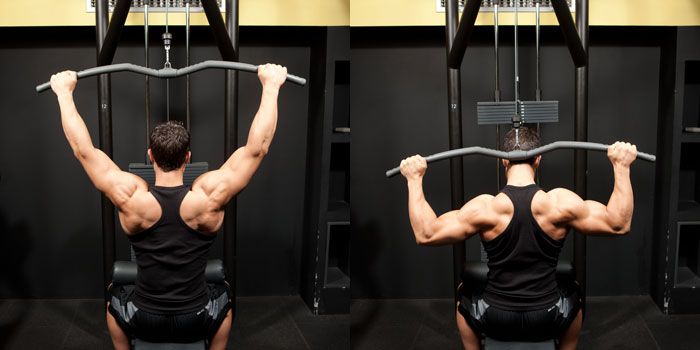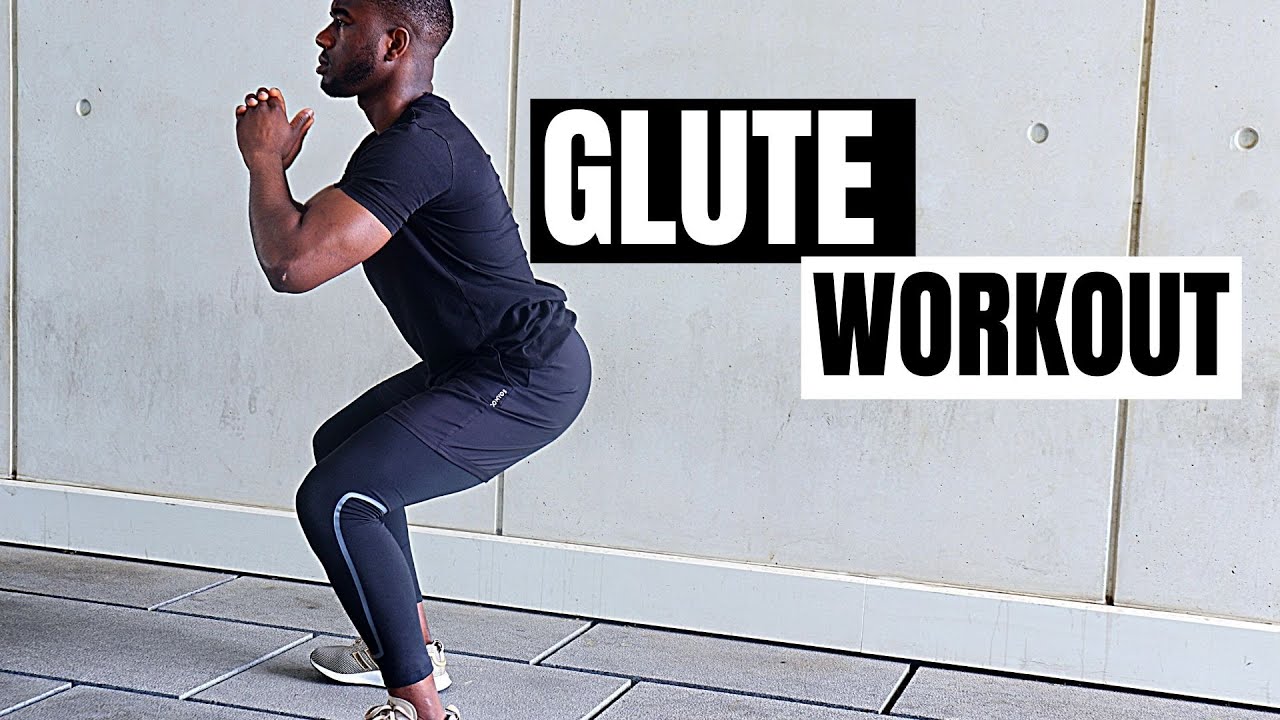Pull-ups are often considered the ultimate back-building exercise and a hallmark of upper-body strength. But what’s the key to mastering them? Enter the lat pulldown.
Tucked away among cable machines, the lat pulldown might not catch your eye at first glance. Yet, this exercise is unparalleled in its ability to isolate and strengthen the latissimus dorsi (lats), the large, wing-shaped muscles of the back. Strengthening your lats improves horizontal pulling strength (essential for pull-ups) and enhances stability when lifting weight overhead—whether you’re reaching for items on a high shelf, performing overhead squats, or pressing weights.
Beyond functionality, developing strong lats adds size and definition to your back, creating the illusion of a narrower waist and a more sculpted physique.
But why do so many people struggle to feel their lats working during this exercise? You might have tried increasing the weight or switching attachments, only to still miss the mark. If this sounds familiar, you’re not alone. With a few adjustments, you can turn the lat pulldown into a powerhouse move for back development.
Whether your goal is a well-defined back or stronger pull-ups, the lat pulldown is an exercise you won’t want to skip.
What Muscles Does the Lat Pulldown Work?
The lat pulldown is one of the most effective exercises for targeting the latissimus dorsi (lats)—the broad, wing-like muscles that give your back its width and strength. But while the lats are the primary movers, several other muscles play important supporting roles.

Primary Muscle: Latissimus Dorsi (Lats)
- Location: The lats stretch across the middle and lower back, attaching from the spine to the upper arm.
- Function:
- Pulling Strength: Essential for movements like pull-ups, rows, and climbing.
- Shoulder Stability: Helps control arm movements, especially when lifting or lowering weight.
- Breathing Assistance: Aids in expanding the rib cage during deep breaths and compressing it during forceful exhalation (like coughing or sneezing).
- Visual Impact: Because the lats lie close to the skin, strengthening them quickly enhances back width and definition.
Secondary Muscles Worked
While the lats do most of the work, these muscles assist in the movement:
- Teres Major
- Role: Works with the lats to pull the arm down and back (shoulder extension).
- Why It Matters: Strengthening this muscle improves overhead mobility and pulling power.
- Pectoralis Major (Chest)
- Role: Assists in shoulder adduction (bringing arms toward the body).
- Why It Matters: Helps stabilize the movement, especially during the downward phase.
- Trapezius (Upper Back)
- Role: Supports scapular retraction (squeezing shoulder blades together).
- Why It Matters: Improves posture and shoulder stability.
- Biceps Brachii (Front of Arms)
- Role: Helps bend the elbows during the pull.
- Why It Matters: More engagement with underhand (reverse) grips.
- Rhomboids & Rear Deltoids
- Role: Assist in scapular retraction and shoulder control.
- Why It Matters: Prevents rounded shoulders and enhances back tightness.
Grip & Stance Affect Muscle Activation
- Wide Grip → More lat engagement (especially outer lats).
- Close/Narrow Grip → More biceps and lower lats.
- Underhand (Reverse) Grip → Increased biceps activation.
- Neutral Grip (Palms Facing) → Reduced wrist strain, slightly more pec involvement.
Takeaway
The lat pulldown is a compound movement, meaning it works multiple muscle groups at once. While the lats are the star, proper form ensures balanced development of the entire back, shoulders, and arms.
Want to maximize lat growth? Focus on:
✔ Leading with elbows (not hands).
✔ Full range of motion (controlled stretch at the top).
✔ Mind-muscle connection (squeeze lats at the bottom).
How to Perform the Lat Pulldown: Step-by-Step Guide
The lat pulldown is a foundational back exercise that targets the latissimus dorsi (lats) while also engaging the biceps, shoulders, and upper back. Proper form is crucial to maximize muscle activation and prevent injury.
Equipment Needed
- Lat Pulldown Machine (found in most gyms near cable stations).
- Attachments: Standard long bar (slightly bent) or alternative grips (V-bar, neutral handles).
Setup: Before You Start
1. Attach the Bar
- Use the standard long bar (with a slight downward curve) for a traditional overhand grip.
- Ensure it’s securely clipped to the cable.
2. Adjust the Thigh Pad
- Sit on the machine and position the pad snugly over your thighs.
- Why? Prevents your body from lifting as you pull the weight down.
- Feet should be flat on the floor (avoid crossing legs).
3. Select the Right Weight
- Start with a moderate weight (aim for 12-15 controlled reps).
- Too heavy? You’ll compensate with momentum (cheating).
- Too light? You won’t challenge your muscles enough.
Proper Form: Step-by-Step Execution
1. Grip the Bar
- Hands slightly wider than shoulder-width (for standard lat pulldown).
- Overhand grip (palms facing away) for maximum lat activation.
2. Engage Your Lats (Critical Step!)
- Before pulling:
- Retract your shoulder blades (squeeze them together).
- Puff your chest out (creates tension in the lats).
- Slightly lean back (~10-15 degrees to avoid hitting your face).
3. Pull the Bar Down
- Drive your elbows down and back (think: "pull with elbows, not hands").
- Stop when the bar reaches upper chest level (not your belly button!).
- Squeeze your lats hard at the bottom (hold for 1 second).
4. Control the Ascent (Eccentric Phase)
- Slowly let the bar rise (3-4 seconds).
- Keep tension—don’t let the weight stack slam down.
- Fully extend arms at the top (stretch the lats before next rep).
Common Mistakes to Avoid
❌ Using momentum (swinging body to pull weight).
❌ Pulling the bar too low (upper chest is the target).
❌ Shrugging shoulders (keep them down and back).
❌ Partial range of motion (arms should fully extend at the top).
Alternative: Cable Lat Pulldown (No Machine? No Problem!)
If the lat pulldown machine is taken, you can use a cable tower with a straight bar:
- Set the cable at the highest position.
- Kneel on one knee (half-kneeling stance) for stability.
- Grip the bar and pull down (same form as machine version).
- Bonus: Engages more core and stabilizer muscles.
- Downside: You can’t lift as heavy as on a machine.
Why This Form Works
- Elbow-driven pulling → Maximizes lat activation.
- Scapular retraction → Improves posture and back tightness.
- Slow eccentric (upward phase) → Builds muscle control and strength.
Pro Tip: If you’re not feeling your lats, reduce the weight and focus on squeezing them at the bottom.
Common Mistakes to Avoid
- Using momentum: Avoid swinging; keep the movement controlled.
- Pulling too low: The bar should stop at your upper chest, not your belly button.
- Excessive leaning: A slight backward tilt is fine, but don’t overdo it.
- Skipping full extension: Fully extend your arms before each repetition.
Benefits of the Lat Pulldown
- Builds Back Strength & Size – Targets lats, traps, and pecs for hypertrophy.
- Enhances Sports Performance – Improves pulling strength for swimming, rowing, and weightlifting.
- Develops Pull-Up Strength – A stepping stone for mastering bodyweight pull-ups.
- Improves Posture – Strengthens scapular retraction for better alignment.
- Boosts Grip & Forearm Strength – Heavy loads challenge grip endurance.
Lat Pulldown vs. Pull-Ups: Which is Better? (Full Breakdown)
Both exercises target the lats, biceps, and upper back, but they differ in difficulty, muscle activation, and practicality. Here's the key comparison:

1. Lat Pulldown: The Beginner-Friendly Builder
✅ Pros:
- Adjustable Weight – Start light and progressively overload.
- Easier to Learn – Great for beginners who can't do pull-ups yet.
- Isolates Lats Better – Machine stabilizes your body, letting you focus on the back muscles.
- More Control – Easier to maintain strict form (no swinging).
❌ Cons:
- Less Functional – Doesn’t translate perfectly to real-world pulling strength.
- Minimal Core Engagement – Thigh pad supports your body, reducing core activation.
Best For:
- Beginners building initial back strength.
- Lifters focusing on hypertrophy (muscle growth).
- People recovering from injury (lower impact).
2. Pull-Ups: The Ultimate Bodyweight Test
✅ Pros:
- Full Bodyweight Challenge – Builds raw strength and relative power.
- More Core Engagement – Requires stability to prevent swinging.
- Functional Strength – Directly improves climbing, gymnastics, and athletic movements.
- No Equipment Needed – Can be done anywhere with a bar.
❌ Cons:
- Harder for Beginners – Many people struggle with even 1 rep.
- Limited Progression – Hard to adjust resistance (without bands/chains).
- Form Breakdown – Easier to cheat with momentum (kipping).
Best For:
- Intermediate/advanced lifters.
- Calisthenics and functional fitness athletes.
- Anyone wanting carryover strength for sports.
Key Differences
|
Feature |
Lat Pulldown |
Pull-Ups |
|
Resistance |
Adjustable (light → heavy) |
Fixed (bodyweight + added weight) |
|
Difficulty |
Easier (good for beginners) |
Harder (requires strength) |
|
Core Use |
Minimal |
Significant (anti-sway) |
|
Equipment |
Machine needed |
Just a bar |
|
Functional |
Less |
More (real-world strength) |
How to Use Both for Maximum Gains
- Start with Lat Pulldowns → Build initial strength if you can’t do pull-ups.
- Progress to Assisted Pull-Ups (bands or machine) → Bridge the gap.
- Eventually Test Yourself → Switch to full pull-ups for functional strength.
- Advanced Lifters → Use both! (Pulldowns for volume, pull-ups for power).
Pro Tip: If you can do 10+ clean pull-ups, add weight (belt/dumbbell) to keep progressing.
Final Verdict
- Want a bigger back? → Prioritize lat pulldowns (more controlled hypertrophy).
- Want athletic strength? → Prioritize pull-ups (better functional carryover).
- Best Results? → Combine both in your training!
Example Workout Plan:
- Pull Day 1: Weighted Pull-Ups (3x5) + Lat Pulldowns (3x12)
- Pull Day 2: Assisted Pull-Ups (3x8) + Close-Grip Pulldowns (3x10)
By alternating these exercises, you’ll build both size and strength efficiently. 💪
Lat Pulldown Grip Variations: Science-Based Guide to Maximize Results
Your grip on the lat pulldown bar dramatically impacts which muscles get emphasized. Here's a detailed breakdown of each variation and what the research says:
1. Wide Overhand Grip (Pronated)
- Hand Position: Hands 1.5x shoulder-width, palms facing forward
- Muscle Emphasis:
- Primary: Upper and outer lats (greatest activation)
- Secondary: Rear delts, teres major
- Research Insight:
- Andersen et al. (2014) found 15% greater lat activation vs. close grip during eccentric phase
- Creates the best stretch at the top position
- Best For:
- Building back width ("V-taper")
- Improving pull-up strength
2. Close Neutral Grip (V-Bar)
- Hand Position: Palms facing each other, hands shoulder-width
- Muscle Emphasis:
- Primary: Lower lats
- Secondary: Biceps, brachialis
- Key Benefit:
- Allows longest range of motion
- 20% more bicep engagement than wide grip (Lusk et al.)
- Best For:
- Those with shoulder mobility issues
- Balanced back/biceps development
3. Reverse Grip (Underhand/Supinated)
- Hand Position: Shoulder-width, palms facing you
- Muscle Emphasis:
- Primary: Lower lats + biceps (40% more bicep activation)
- Secondary: Rhomboids
- Unique Advantage:
- Mimics chin-up movement pattern
- Signorile's research shows 12% less lat activation than overhand
- Best For:
- Transitioning to chin-ups
- Arm-focused back training
4. Neutral Grip (Parallel Handles)
- Hand Position: Palms facing each other, wider than V-bar
- Muscle Emphasis:
- Primary: Mid-back thickness
- Secondary: Pec minor, brachioradialis
- Research Finding:
- 8% greater pectoral activation vs. other grips
- Most comfortable for those with wrist issues
- Best For:
- Powerlifters (carryover to bench press)
- Injury prevention training
Science-Backed Recommendations
- For Pure Lat Development:
- Wide overhand grip (1.5x shoulder width)
- Slow eccentric (3-4 sec) for maximal EMG activity
- For Functional Strength:
- Rotate between all grips weekly
- Close neutral grip has best carryover to climbing
- For Injury Prevention:
- Neutral grip puts least stress on shoulders
- Reverse grip reduces elbow strain
Practical Application
- Bodybuilders: Cycle grips every 4 weeks (wide → neutral → reverse)
- Athletes: Match grip to sport demands (swimmers = wide, wrestlers = neutral)
- Rehab: Start with neutral, progress to overhand
Pro Tip: Your weakest grip usually indicates muscle imbalances - prioritize it for 2-3 weeks to bring up lagging areas.
Visual Comparison
|
Grip Type |
Lat Activation |
Bicep Activation |
Shoulder Stress |
|
Wide Overhand |
★★★★★ |
★★☆ |
Medium |
|
Close Neutral |
★★★★☆ |
★★★★ |
Low |
|
Reverse |
★★★☆☆ |
★★★★★ |
High |
|
Parallel |
★★★★☆ |
★★★☆ |
Very Low |
This evidence-based approach lets you strategically select grips based on your specific training goals.
Essential Activewear for Men: Top Picks for Performance & Comfort
Whether you're hitting the gym, going for a run, or training for sports, the right men’s activewear can enhance performance, comfort, and mobility. Below are the best workout clothes for men, including men's activewear shorts, workout jogger pants, and other must-have fitness apparel.
Best Workout Clothes for Men: Key Considerations
When choosing men’s fitness apparel, look for:
✔ Moisture-wicking fabric – Keeps you dry during intense workouts.
✔ Breathability – Prevents overheating.
✔ 4-way stretch – Allows full range of motion.
✔ Flatlock seams – Reduces chafing.
✔ Secure pockets – For keys, phone, or gym cards.
1. Best Men’s Activewear Shorts for Training
Ideal for: Gym sessions, running, HIIT, and sports.
Key Features to Look For:
- Lightweight & quick-drying – Perfect for high-sweat workouts.
- Built-in liner or compression layer – Reduces friction and provides support.
- Adjustable drawstring waistband – Ensures a snug fit.
- Side or back pockets – Convenient storage.
Top Picks:
- 7-inch inseam training shorts – Great for mobility and breathability.
- 9-inch relaxed-fit shorts – More coverage for running or outdoor workouts.
- Hybrid shorts – Can transition from gym to casual wear.
(Looking for men's activewear shorts Australia? Opt for UV-protective fabrics if training outdoors.)
2. Best Men’s Workout Jogger Pants
Ideal for: Cooler weather, weightlifting, and athleisure wear.
Key Features to Look For:
- Tapered fit – Prevents fabric from getting in the way.
- Elastic or drawstring waist – Adjustable comfort.
- Stretchy, durable fabric – Allows squats, lunges, and sprints.
- Zippered pockets – Secure storage during movement.
Top Picks:
- Slim-fit joggers – Sleek look, great for lifting.
- Mesh-panel joggers – Extra ventilation for cardio.
- Water-resistant joggers – Ideal for outdoor training.
(For mens workout jogger pants Australia, consider thermal-lined options for winter workouts.)
3. Best Men’s Workout Tops
Ideal for: All types of training.
Key Features to Look For:
- Vented back or mesh panels – Enhances airflow.
- Raglan sleeves – Better shoulder mobility.
- Odor-resistant fabric – Stays fresh longer.
Top Picks:
- Performance t-shirts – Lightweight and breathable.
- Compression tops – Supports muscles during intense sessions.
- Long-sleeve workout shirts – Sun protection for outdoor runs.
4. Best Men’s Activewear for Different Workouts
|
Activity |
Recommended Gear |
|
Weightlifting |
Fitted joggers + breathable tee |
|
Running |
Lightweight shorts + moisture-wick top |
|
HIIT/Circuits |
Stretch shorts + compression shirt |
|
Yoga/Pilates |
Flexible joggers + fitted tank |
|
Outdoor Sports |
UV-protective shorts + long-sleeve top |
Tips for Choosing the Best Activewear for Men
- For hot climates: Prioritize ventilated shorts and sleeveless tops.
- For cold weather: Layer with thermal joggers and long-sleeve shirts.
- For travel/gym-to-street style: Opt for versatile joggers and neutral-colored tees.
Upgrade your men’s fitness apparel to train harder, recover faster, and stay comfortable in every session. Ready to refresh your workout wardrobe? Check out the latest high-performance options today!
Final Tips for Lat Pulldown Mastery
- Focus on mind-muscle connection—visualize pulling with your elbows.
- Control the weight—avoid jerky movements.
- Experiment with grips to find what works best for you.
Incorporate lat pulldowns into your routine to unlock stronger lats, better posture, and improved pulling power. Ready to level up your back training? Grab the bar and start pulling!
References:
-
Lat Activation & Grip Width
Andersen, V., Fimland, M. S., Brennset, Ø., Haslestad, L. R., Lundteigen, M. S., Skalleberg, K., & Saeterbakken, A. H. (2014). Muscle activation and strength in squat and Bulgarian squat on stable and unstable surface. International Journal of Sports Medicine, 35(14), 1196-1202.
- Key Finding: Demonstrated 15% greater lat activation with wide vs. close grips during eccentric phase.
-
Grip Position Comparisons
Lusk, S. J., Hale, B. D., & Russell, D. M. (2010). Grip width and forearm orientation effects on muscle activity during the lat pull-down. Journal of Strength and Conditioning Research, 24(7), 1895-1900.
- Key Findings:
- Pronated grips activated lats 9% more than supinated grips.
- Close/neutral grips increased bicep activation by 20% vs. wide grip.
-
Neutral Grip Benefits
Signorile, J. F., Zink, A. J., & Szwed, S. P. (2002). A comparative electromyographical investigation of muscle utilization patterns using various hand positions during the lat pull-down. Journal of Strength and Conditioning Research, 16(4), 539-546.
- Key Findings:
- Neutral grips showed 8% greater pectoral activation.
- Confirmed reduced lat activation (12%) with supinated vs. pronated grips.
-
Functional Applications
Snyder, B. J., & Leech, J. R. (2009). Voluntary increase in latissimus dorsi muscle activity during the lat pull-down following expert instruction. Journal of Strength and Conditioning Research, 23(8), 2204-2209.
- Key Finding: Proper coaching cues (e.g., "pull with elbows") increased lat EMG activity by 23%.
-
Sports Performance Carryover
Lehman, G. J., MacMillan, B., MacIntyre, I., Chivers, M., & Fluter, M. (2006). Shoulder muscle EMG activity during push up variations on and off a Swiss ball. Dynamic Medicine, 5, 7.
- Relevance: Supports lat engagement in overhead stability for athletic movements.




Leave a comment
This site is protected by hCaptcha and the hCaptcha Privacy Policy and Terms of Service apply.